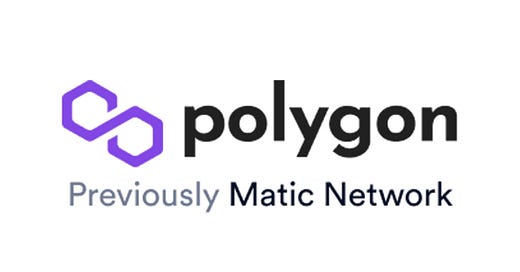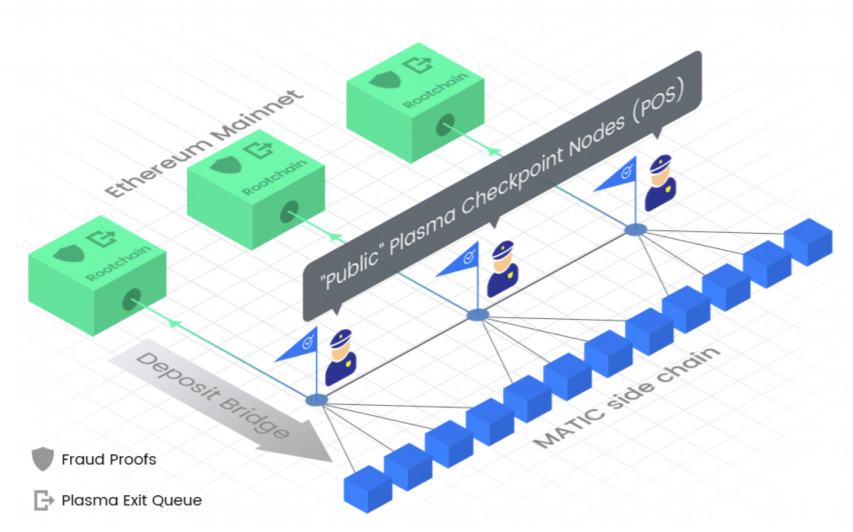Blockchain, crypto and their use cases are capturing mass attention more than ever before despite uncertainty over legitimacy and policy they have been going strong. Many pundits claim this year to be pivotal towards a decentralized future. Polygon previously known as Matic network is an Indian unicorn most of us have not heard up, It is gaining immense popularity in India. The company has built a cutting edge ethereum scalability solution solving for the challenges faced by ethereum, it has been growing under the radar and has become one of the most promising projects to come out of southeast Asia. In this piece, I will throw some light on polygon and its story. Dive in!
What is Polygon?
Polygon earlier known as Matic Network is an interchain scalability solution that gives an infrastructure for creating blockchain networks that can interface with each other. Depicted as 'the Ethereum's Internet of Blockchains'. It is the answer to some of the challenges faced by Ethereum today - such as heavy fees, poor user experience and low transactions per second (TPS). And it aims to create a multi-chain ecosystem of Ethereum compatible blockchains.
Polygon is involved in all the hot use cases of cryptocurrencies like DeFi, DAO, NFTs and more. It is today ranked among the top 15 cryptocurrencies in the world. Polygon was created in 2018 and went live as Matic network in 2020 before rebranding itself to polygon in 2021.
To understand polygon we should first understand what ethereum is? Ethereum is basically like bitcoin created with an idea to accommodate a lot of other use cases apart from being just a decentralized ledger for tracking transactions. In other words, ethereum is a platform that is home to a range of decentralized applications where you can join virtual worlds, play games, buy art, and use it for financial services. However, this much activity on its blockchain has rendered Ethereum almost unusable, as the cost of transmission is rising and traffic is becoming clogged.
Problems with Ethereum:
Ethereum is OG, it has been instrumental in building the decentralized ecosystem. but it has some issues one of the major ones being scalability. Any transaction made on the network should be replicated across all nodes to ensure the decentralized ledger is in sync, but the network has its own limitations of transaction throughput, transaction speed and transaction cost which have to be taken into account, as the no of transactions raises it has been difficult for ethereum to be able to process them seamlessly. To solve for demand, ethereum came up with the concept of gas just like in logistics, you pay a gas cost depending on the memory and storage requirement of the transaction. The fee ranges somewhere between $9 to $30 on average and ethereum can only process 15 transactions/ section at max which is very less, other than that it works on proof of work that is before validating a transaction it has to reach global consensus. the high costs, slow processing time, and low transaction throughput has made ethereum unfeasible for many use cases.
How does polygon solve these problems:
The crux of creating polygon (prev - Matic) was to solve for ethereum cost and stability issues. Polygon is a Layer 2 scaling solution that achieves scale by utilizing sidechains for off-chain computation while ensuring asset security using the Plasma framework and a decentralized network of Proof-of-Stake (PoS) validators.. In contrast to the first layer, which is the Ethereum blockchain itself, polygon provides a second layer that helps improve transaction costs and throughput. Polygon is not just a simple scaling solution, it is a platform that allows developers to create sovereign blockchains with more specific functionality.
A polygon system has two main parts one is the main chain which s essentially the ethereum blockchain in which some matic smart contracts are present other is the matic sidechain which is a separate blockchain build on as a second layer of the main chain. This sidechain developed by Matic has been optimized for speed and throughput. It can process a transaction in 1 to 2 seconds compared to 14-15 seconds on the main chain. The transaction fee is very small and is paid in matic tokens. It is like bitcoin and ethereum but it runs on the “proof of stake” concept instead of “proof of work”. People known as validators run computers that constantly process Matic transactions and keep an internal copy on the ledger in exchange for Matic tokens as long as they maintain the ledger correctly this system is less energy-intensive and is able to process transactions quickly as compared to ethereum or bitcoin. In a crux using Matic, you can offload the computational burden from ethereum to Matic side chains and can process the transaction quickly with significantly low costs.
How is this scalable? Well, you can use the same framework to build n number of side chains as the volume increases, thus achieving scalability.
At the heart of the solution is polygon SDK for developers to build Ethereum-compatible decentralized applications as sidechains and connect them to its main blockchain.
These can be built using one of the three scalability methods: Plasma chains, Zk rollups and optimistic rollups. (will not go much into the technicalities here)
Journey
Matic network is the brainchild of Jaynti Kanani, Sandeep Nailwal, and Anurag Arjun. The main ideator was jaynti, born and bought up in Ahemdabad and a software engineer by coincidence, Jaynti has come from humble beginnings to create one of the most valuable crypto projects of the generation, he had short stints as a software engineer first then a founder to wrapping up his first startup to then going back to working as a software engineer before coming up with Matic now known as polygon. He met Sandeep and Anurag along the journey and the three have created a mammoth company with a market cap of $7.5 Bn ($11.5 on a fully diluted basis) in a very short period of time with funding of mere $5M.
They have piqued major interest from investors and are backed by popular names like Mark Cuban and coinbase ventures. It is an inspiring story of local entrepreneurs making it big and something we will be telling for a long time to come.
Today Matic is the scaling solution of choice for popular platforms like decentraland, open sea, Maker DAO, potus, ripio credit, quarkchain, polymarket and as of date is the most popular L2 solution for ethereum.
Sources: polygon blog, finance research, tiger feathers(Aryaman vir), stacked crypto, blockchain council, economic times.








